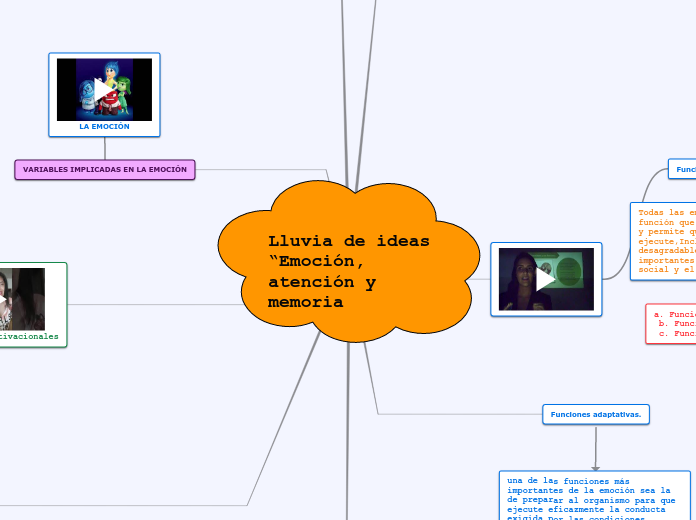- Hipotonía generalizada: durante aproximadamente los 3 primeros días de vida
- Hipertonía fisiológica: durante el primer trimestre a partir del 4º día de vida aproximadamente
TONO MUSCULAR
Estado de tensión permanente de los músculos de origen esencialmente reflejo, variable, cuya misión fundamental tiene al ajuste de las posturas locales y de la actividad general
The part of speech is a category to which a word is assigned according to its syntactic functions. In English the main parts of speech are noun, pronoun, adjective, determiner, verb, adverb, preposition, conjunction, and interjection.
WALLON
Estadio de impulsividad motriz
A preposition is one of the most exciting parts of grammar. A preposition is used to describe the location of something in relation to something else.
SUEÑO
When a preposition consists of more than one word, it is called double preposition.
Inicialmente alrededor de 20 hs de sueño
La postura que el niño o niña adpota mientras duerme o esta en vigilia revela su actividad tónica
Esencial para la absorción de energía
MOVIMIENTO
Compound preposition consists of two or more words.
El niño es sensible a balanceos en el espacio
Tónico
Clónico
ALIMENTACIÓN
When a preposition consists of one word it is called single or simple preposition.
Se realiza cada 3 hs (o a demanda)
El hambre despierta al niño o niña, lo cuál produce agitación de gritos y espasmos que serán cesados al momento de contacto de sus labios con pezon o mamadera
No es automática
PIAGET
Psicogénesis
ETAPA 2: PRIMERAS ADAPTACIONES ADQUIRIDAS Y LA REACCIÓN CIRCULAR PRIMARIA
1- 4 MESES
Aquí comienzan a surgir las primeras reacciones circulares
Sobre las reacciones circulares se configura la inteligencia práctica o sensoriomotriz
se organizan en esquemas sensoriomotores primarios y están centradas en la acción del propio cuerpo.
Repite gestos que fueron realizados por azar
Reacciones circulares: ejercicio funcional cuyo fin es mantener o descubrir otra vez un resultado nuevo o interesante
Inicia cuando las actividades reflejas comienzan a sufrir modificaciones vinculadas a la experiencia
ETAPA 1: EJERCICIO DE LOS REFLEJOS
0-1 MES
Ausencia de genuino comportamiento inteligente
El niño o niña realiza actividades inconexas
Muestra un poco más que los relfejos
CORIAT
A verb is an action word or 'doing' word that signifies movement in some way.
TRONCO
An auxiliary verb helps the main (full) verb and is also called a 'helping verb.' With auxiliary verbs, you can write sentences in different tenses, moods, or voices.
COLUMNA
Predomina el plano extensor
Puede presentar cierto grado de lateralizacion
Permanece en la linea media del cuerpo
MIEMBROS INFERIORES
A participle is a verb form that can be used as an adjective or to create a verb tense. There are two types of participles: Present participle (ending -ing) and Past participle (usually ending -ed, -d, -t, -en, or -n).
El ángulo poplíteo es de 90º
En músculos aductores de los muslos es de 90º
Están en plena etapa de paratonía fisiológica
Talones no hacen contacto con el apoyo
Rodillas flexionadas
Es menos evidente la asimetría tónica cervical
MIEMBROS SUPERIORES
A modal is a type of auxiliary (helping) verb that is used to express: ability, possibility, permission or obligation. The main modal verbs in the English language are: can, could, may, might, must, shall, should, will, would.
Extensibilidad limitada
En la maniobra de la bufanda el codo coincide con la línea media
Predomina el plano flexor
Dedos flexionados de modo tal que cierran el puño y los pulgares se oponen.
Manos próximas a los hombros
CABEZA
A linking verb connects the subject with a word that gives information about the subject, such as a condition or relationship.
La posición asimétrica de la cabeza produce asimetría postural en los miembros.
Sienten atracción por la luz suave y rechazo por la muy viva
Esto desencadena el reflejo de defensa oculo-palpebral; oclusión de los párpados y rotación de la cabeza en sentido opuesto.
No permanece largo rato en la linea media
Conducta regida por los reflejos arcaicos
A verb with its own meaning: a verb that is not an auxiliary verb.









